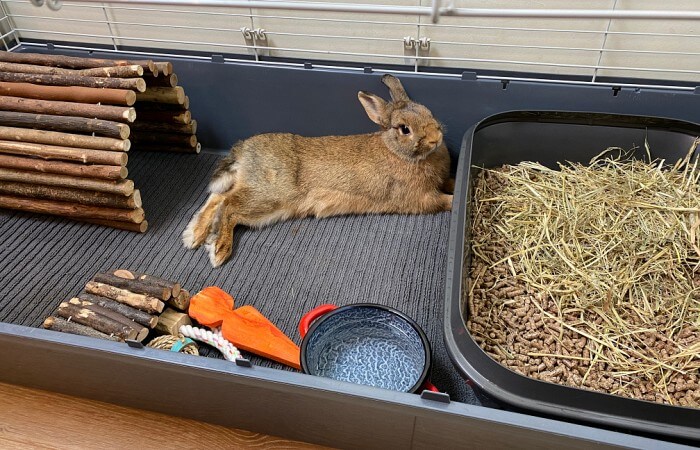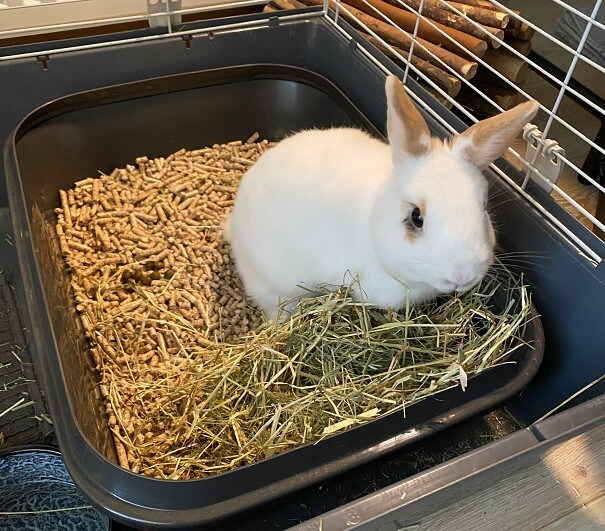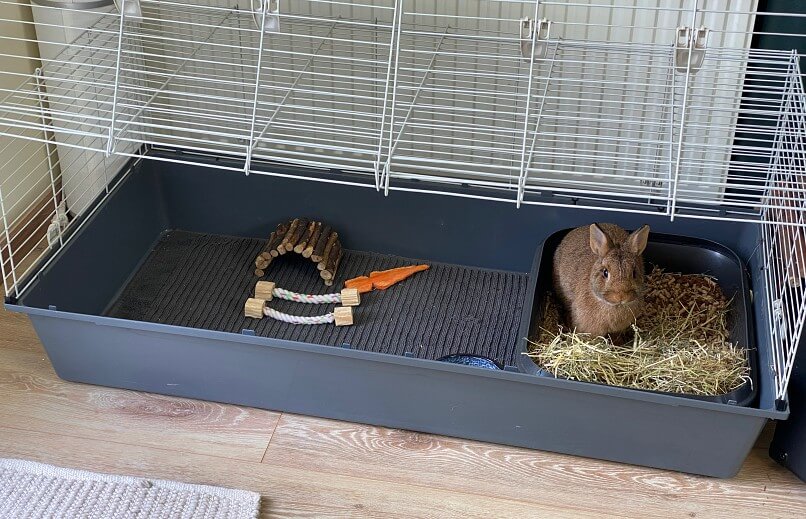How to Litter Train a Rabbit
How to Litter Train a Rabbit: A Comprehensive Guide
Litter training a rabbit can significantly enhance both your and your pet’s quality of life. Rabbits are naturally clean animals, and with a bit of patience and consistency, you can teach your bunny to always use their litter box. This guide compiles expert advice and practical tips from multiple sources and my own experiences to help you successfully litter train your rabbit.

🛒 Supplies You Need:
To get started, gather the following supplies:

- Litter Box: Choose a box size based on the size of your rabbit. It should be large enough for them to move around comfortably and even lay down. I personally use and recommend litter boxes made for cats in the size of / minimum 15 * 6 * 20 inches. I do not recommend small, triangle-shaped corner litter boxes, as they are not suitable for properly litter training your rabbit!
- Litter Material: The best one is compressed sawdust pellets. It’s safe, non-toxic, and very absorbent. You can use paper-based, organic litter as well. Avoid pine, cedar, clay, clumping litters due to potential health risks.
- Hay: Place a large amount of hay in one side of the litter box – this is the best placement for the daily hay portion – because bunnies tend to poop the most while eating – and this way, they can easily be trained to use the litter box naturally!
- Cleaning Supplies: White vinegar, dawn soap, and enzyme cleaners for accidents.
💥 Step-by-Step Litter Training Process:
- If you have a new bunny, when you bring them home, don’t let them out of their enclosure / cage for the first few days so they can get used to that space as their base. However, if you’ve had your bunny for a while, when litter training them, keep them in their enclosure for a few days during the initial training period. This will help reinforce their understanding that the cage is their designated area for business.
- In the first few days, you can cover their entire space with wood shavings to help them indicate which corner they prefer for their business.
- Once you see where they tend to urinate and poop, place a larger litter box / or cat litter box in that spot.
- Scatter wood pellets (compressed sawdust pellets) at the bottom of the litter box. On top of that, add a bit of the previously collected dirty bedding so that the bunny can smell their own scent and understand that this is their designated toilet area.

- Afterward, thoroughly clean the entire bottom of the cage with vinegar water to remove any leftover scent traces. This way, they will only smell their scent in the litter box.
- If they still urinate next to the litter box, immediately clean it up, place the used paper towel in the litter box, and re-sanitize the cage with vinegar water. Also, always place the droppings in the litter box.
- Rabbits usually poop the most while eating, so place unlimited fresh hay in one side of the litter box. This way, their droppings will go to the right place while eating. You can also put a thin layer of hay on top of the pellets to make the toilet area more comfortable for their paws.
- When letting the bunny out, allow them to come out of the cage on their own so they know where to return. The cage should be in a calm, well-lit, and easily accessible place, and should have a carpet inside as well as at the entrance so the bunny can move around comfortably.
- It is very important to spay or neuter rabbits after 5-6 months of age because adult rabbits often have issues with litter-training. They may start marking their territory by urinating and leaving a lot of droppings.
- If you take your bunny to a new location, don’t let them roam freely immediately. Only do so once they reliably use their litter box — otherwise, they might seek a suitable spot in the new environment, which could be your beanbag chair or sofa.

💡 Troubleshooting Common Issues
- Accidents Outside the Box: Clean the area thoroughly with a pet-safe cleaner to remove the scent. Place a litter box in that spot if it becomes a recurrent issue.
- Kicking Litter Out: Use a high-sided or covered litter box to contain the mess. Ensure the entrance is low enough for easy access.
- Persistent Urination Outside the Box: Evaluate the placement, size, and cleanliness of the litter box. Ensure it’s accessible and appealing to your rabbit.
⚡️ Special Considerations
- Cleanliness: Regularly clean the litter box when it becomes soiled. Do not let your rabbit sit in a dirty box, as this can deter them from using it. 🐰
- Health Monitoring: A rabbit’s litter box habits can provide insights into their health. Regular observation of their fecal output can help you catch early signs of illness. 🙏

🤍 Conclusion
Litter training your rabbit requires patience and consistency, but the rewards are well worth the effort. A well-trained rabbit will have a cleaner living environment, and you will have an easier time maintaining their habitat. Follow these steps and tips to successfully litter train your rabbit and enjoy a harmonious life with your furry friend.
Did you know that you can teach your bunny AMAZING tricks - with just 15 minutes of training per day?
Check Out My Online Course: The Secrets Of Bunny Training
"The Best Bunny Training Material Online"
I started teaching my first rabbit, Pamacs, in 2022, and very quickly achieved unexpected success with him. Lots of people have asked me how I taught him so many tricks. I decided to show the public how to teach bunnies in a professional video course.
The end result can be found on this page. In the detailed video material, I will share all the secrets of rabbit training with you!








 Available worldwide! Lang: English
Available worldwide! Lang: English 
